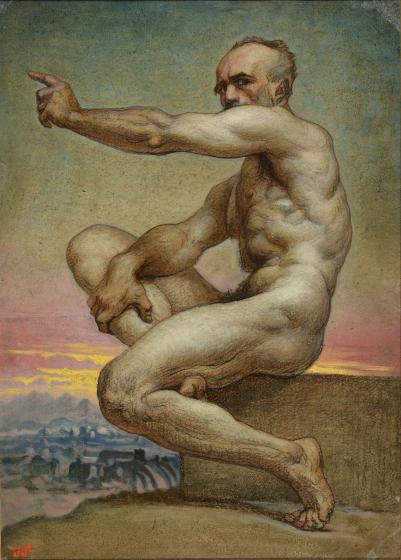Naked selfportrait
Information sur l’artiste
Jean-Baptiste Frénet [Lyon, 1814 – Charly, 1889]

Autoportrait nu, vers 1860.
Image © Lyon MBA - Photo Alain Basset
Although he had a classical education, attending Ingres' studio in Paris, Jean-Baptiste Frénet was one of the most unusual characters of the 19th century art scene in Lyon. His creations, which do not follow traditional norms, are characterised by their eccentricity and have remained largely misunderstood among his contemporaries. The artist combined Christian influences with egalitarian, socialist thinking, and was influenced as much by the theories of Félicité de Lamennais and liberal Catholic ideas as by the revolutionary ideals of 1848. His biggest project, the decor for the Sainte-Blandine crypt in the Saint-Martin d’Ainay basilica in Lyon, came up against fierce criticism from conservative spheres, and was destroyed a few years after its completion in 1848.
This episode had a profound effect on Frénet, who gradually abandoned painting. This strange nude self-portrait appears to belong to this period. The painting form breaks with the codes of the genre: the artist boldly displays his body to the viewer in an irreverent portrayal that exaggerates his musculature to an almost preposterous degree. His pose resembles that of Michelangelo's ignudi on the ceiling of the Sistine Chapel in Rome. Frénet was a great admirer of the palpable energy in the Italian master's works. Could the accusatory index finger pointing to the left be a reference to the injustice the painter suffered when his decor was destroyed, as though he were conjuring those responsible?
Circa 1860
Oil, gouache, charcoal, and pastels on card
H. 74.5; L. 53 cm
Purchased in 2016 with support from the French government and the Rhône-Alpes Region as part of the FRAM programme.
Inv. 2016.8.1





